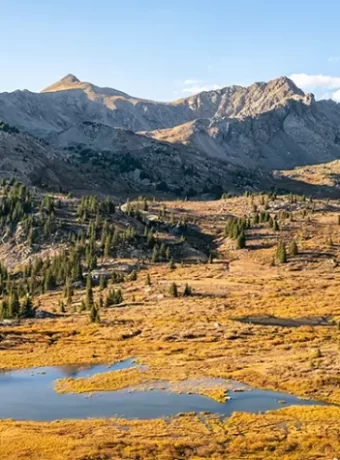Exploring the Rich History of Key West Florida
The vibrant island city of Key West, perched at the southernmost tip of the Florida Keys, pulsates with a history as captivating as its sunsets. Exploring Key West’s past is like stepping into a blend of Caribbean charm, literary legend, and rebellious spirit. Let’s uncover the fascinating history of Key West Florida together.
Centuries before Jimmy Buffett sang of “Margaritaville” and Ernest Hemingway penned novels from his iconic whitewashed home, indigenous people navigated the turquoise waters. These early settlers called this captivating island home. Key West history is a story of transformation, resilience, and a unique blend of cultural influences, creating the iconic destination we see today.
Table of Contents
From Bone Island to Cigar Capital: Key West’s Early Days
Long before Key West became a famed vacation destination and haven for artists and writers, it was known as Cayo Hueso. This is Spanish for “Bone Island”. The name hints at a time when indigenous tribes, likely the Calusa people, used the island as a burial ground.
The First Settlers of Key West
Archaeological evidence shows that Native Americans were living in the Florida Keys as far back as 800 A.D. They were skilled fishermen and hunters. These early inhabitants of Key West lived off the bounty of the sea and the land.
When Spanish explorers, including Juan Ponce de León, arrived in the 16th century, they encountered these native populations. The Calusa people fiercely resisted Spanish attempts at colonization. They remained a strong presence in the Keys for several centuries.
European diseases and conflicts took a toll. Despite the challenges they faced, they were a vibrant part of the earliest history of Key West Florida.
Key West Changes Hands
Spain’s hold on Key West wasn’t absolute. In 1815, the Spanish governor, Juan Pablo Salas, received the island as a land grant. A few years later, as Spain prepared to cede Florida to the United States, Salas sold the island.
An American businessman, John Simonton, purchased the island in 1821 for $2,000. This transaction officially brought Key West under American control, ushering in a new era for the island.
Islamorada Key to Key West Scenic Modern Drive
Days on the water chasing your favorite prey. Sun Protection is a must. Our graphic fishing hoodies are a UPF-50, roomy for unrestrictive casting. A patented sewn in facemask for extra protection from the sun.

Saltwater Graphic Fishing Hoodies

Prestige G-XS Saltwater Fly Rods
Sun Protective Graphic Gloves will help in keeping hands from getting burnt on the water fly fishing or wind surfing.

Fish Water Sun Gloves Great for Fly Fishing, Surfing, Photography, or Driving
Key West Under U.S. Control: Piracy, Wrecking, and a Booming Economy
Key West’s strategic location in the Florida Straits made it valuable to the fledgling United States. The island, under the command of Commodore David Porter, became a base for the U.S. Navy. Their main task was to suppress rampant piracy in the region.
Key West, now a U.S. territory, also saw the rise of “wrecking.” This was the risky but often lucrative business of salvaging cargo from ships that ran aground on the treacherous reefs nearby.
This era of maritime adventure and opportunism shaped Key West’s early identity. Skilled wreckers, many from the Bahamas, became key figures in Key West’s burgeoning economy.
Fortunes were built (and sometimes lost) on the salvaged goods brought ashore. This period laid the foundation for Key West’s diverse population. It attracted people from the Caribbean, Europe, and the American Northeast. The Key West history from this period reflects that unique melting pot.
A New Industry Emerges: Cigars and the Cuban Influence
By the mid-19th century, the history of Key West Florida saw the emergence of a new economic powerhouse: the cigar industry. Cuban cigar makers, seeking refuge from political unrest in Cuba, brought their skills and traditions to Key West.
They found ample supplies of Cuban tobacco in their new home. Factories sprang up, particularly in Key West’s growing Cuban neighborhoods. Before long, Key West became a cigar manufacturing hub.
Some estimate that by the late 1800s, more than 100 cigar factories were operating in Key West, employing thousands. This new industry established Key West as a serious contender to Havana in the world of cigar production.
A Military Outpost: Forts, Wars, and Key West’s Strategic Importance
Throughout history, Key West Florida has played a pivotal role in U.S. military strategy. This is primarily because of its prime location at the mouth of the Gulf of Mexico. This location made the island essential during various conflicts. These conflicts range from the Civil War to the Cold War, and beyond.
Fort Zachary Taylor and the Civil War
One of the most prominent physical reminders of Key West’s past is Fort Zachary Taylor. This massive brick fortification, built in the mid-1800s, stands at the island’s strategic southern tip.
The fort is named for President Zachary Taylor. It was constructed to protect the nation’s southeastern coastline. It played a significant role in the Civil War.
Despite local sympathies for the Confederacy, Key West remained under Union control throughout the war. This is because of the Union’s early seizure of Fort Taylor. This military presence contributed to Key West’s economic stability while much of the South struggled during that era.
The Spanish-American War
Later in the 19th century, tensions rose between the United States and Spain. Once again, Key West’s history was shaped by its strategic significance. The island, home to a U.S. naval base, served as a crucial launching point for American forces during the Spanish-American War in 1898.
This relatively brief but consequential conflict cemented Key West’s strategic importance in American military history.
The 20th Century: A Continued Military Presence
Key West’s strategic significance didn’t fade with the close of the 19th century. It remained important to the U.S. military. Throughout the 20th century, it housed Naval Air Station Key West.
This was a key facility during World War II and the subsequent Cold War era. The military’s presence, particularly that of the Navy, remained a significant factor in Key West’s economy and shaped its character throughout these decades.
Creative Haven: From Hemingway to Buffett and Beyond
Today, Key West is as renowned for its artistic soul as its historical significance. The island’s natural beauty, laid-back atmosphere, and colorful past have been a magnet for artists, writers, and musicians seeking refuge, inspiration, and a touch of the unconventional. The history of Key West Florida is forever entwined with these creative figures.
Ernest Hemingway: A Legacy in White and Green
No name is more synonymous with Key West’s literary history than Ernest Hemingway. The famed novelist and short story writer was drawn to the island. The fishing, relaxed ambiance, and escape from societal constraints, made Key West his home in the 1930s.
Hemingway lived and wrote at 907 Whitehead Street. This beautiful Spanish Colonial home with lush gardens is now a museum. You can tour the rooms where Hemingway penned classics like “For Whom the Bell Tolls” and “To Have and Have Not.”
You can also see his writing studio and encounter the famous descendants of his beloved six-toed cats.
Another draw for Hemingway was the fishing. Learn more about Fly Fishing in the Florida Keys.
Tennessee Williams and Literary Key West
Hemingway’s connection to Key West often steals the spotlight. However, the island’s literary history goes well beyond “Papa.” Tennessee Williams, one of America’s most celebrated playwrights, also found solace and inspiration in Key West.
He lived on the island for nearly 40 years. Although his primary home and writing retreat were here, his impact on Key West’s creative spirit is undeniable.
Key West was more than a getaway for these writers. It provided a setting, characters, and even a worldview for some of their most significant works.
Jimmy Buffett and the Sounds of Paradise
The history of Key West Florida isn’t all about prose and plays. It’s filled with music too. Singer-songwriter Jimmy Buffett was drawn to the island’s easygoing vibe and nautical charm in the early 1970s.
He developed his signature “gulf and western” sound against the backdrop of Key West sunsets, swaying palm trees, and legendary local watering holes. His music is infused with escapism and celebration of a laid-back lifestyle. It is now forever linked to Key West’s image and continues to attract those seeking a bit of the “Margaritaville” experience he immortalized in song.
Beyond the Legends
The artistic energy Hemingway, Williams, and Buffett tapped into hasn’t faded with time. Today, Key West is home to a vibrant arts scene that thrives. For such legends as Wyatt Hurts. A local beach bum with a guitar. From quirky galleries and lively street performers to annual literary festivals and renowned theater companies, Key West’s creative flame continues to burn brightly.
There was a time in my youth when we all jump in a Vega and head to Florida from Michigan at the drop of a hat. It was like the town next door. Days when the beaches of Venice and Sarasota weren’t crowded, almost wild.
This creative energy infuses everything. You’ll find it from the architecture and public art to the local cuisine and unique shops.
Key West Today: Embracing the Past, Celebrating the Present
Today, millions of visitors flock to Key West annually. They are drawn by its blend of sun-soaked relaxation, vibrant nightlife, historical sites, and a unique cultural blend. As you wander down Duval Street, past the pastel-hued buildings housing lively bars and art galleries, you’re strolling through a living testament to the many chapters of the history of Key West Florida.
The Conch Republic: A Tongue-in-Cheek Rebellion
Key West is well-known for its independent, often rebellious spirit, perhaps best embodied by the 1982 “secession” of the island to form the Conch Republic. What began as a tongue-in-cheek protest over a U.S. Border Patrol roadblock evolved into a lighthearted, enduring symbol of Key West’s individuality.
Every year, Key West commemorates its “independence” with a week-long festival. The festival celebrates the island’s unique culture and free-spirited vibe.
Preserving the Past, Living in the Present
Key West has walked a careful tightrope, balancing preservation with progress. The island is home to numerous historical landmarks, museums, and beautifully restored buildings from the Victorian era and earlier.
Key West has worked diligently to safeguard its coral reefs. You’ll discover unique ecotourism adventures on and under the crystal-clear waters.
FAQs about History of Key West Florida
What is the history behind Key West?
Key West, originally inhabited by indigenous people and called “Cayo Hueso” (Bone Island), was claimed by Spain. The U.S. gained control in 1821. This led to an era of piracy suppression, shipwrecking, and cigar manufacturing. It served as a crucial military base during the Civil War and beyond.
The arrival of Ernest Hemingway, Tennessee Williams, and, later, Jimmy Buffett helped shape its artistic identity. In 1982, Key West declared itself the “Conch Republic” in a playful protest against the U.S. government.
What is Key West most known for?
Key West is most famously known for being the southernmost city in the continental United States. Beyond its geographic distinction, the island city is recognized for its vibrant cultural scene (Hemingway’s legacy, Jimmy Buffett’s music, Tennessee Williams’s plays, and a thriving art scene), laid-back “Conch Republic” vibe, and proximity to Cuba.
Who lived in Key West first?
Native Americans, specifically believed to be the Calusa tribe, were the first known inhabitants of Key West, with archaeological evidence dating back centuries. They thrived on fishing and hunting, establishing a rich culture that predates European arrival.
Why was Key West called Bone island?
The moniker “Bone Island” comes from early Spanish explorers discovering human remains scattered across the island. They believed these bones belonged to the indigenous Calusa people who used the island for burial purposes.
Conclusion of History of Key West Florida
Key West’s allure goes beyond its idyllic setting. It stems from its captivating past and ever-evolving present. Whether you are captivated by tales of pirates, captivated by literary giants, enchanted by Jimmy Buffet’s music, or eager to delve into the island’s multifaceted history, there’s no denying the powerful magnetism of this unique place. From the echoing halls of Fort Zachary Taylor to a lively bar on Duval Street where live music fills the air, the history of Key West Florida lives and breathes around you.
Beyond Key West Florida are Other Islands
Such as Iceland, with beautiful lush landscapes and rivers full of Atlantic Salmon. Or Montana’s famed Spring Creeks of Livingston, Montana.






